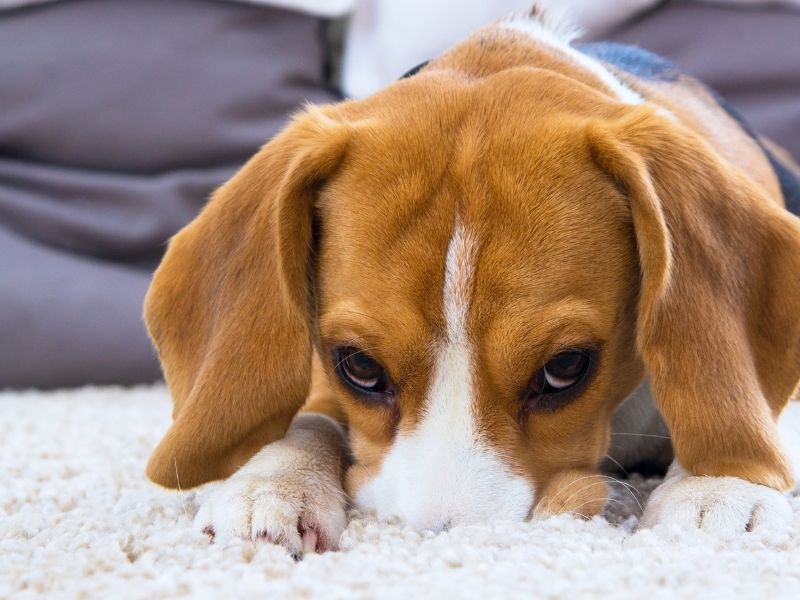
How to Stop a Dog from Marking in the House for Good
This post may include affiliate links. Please read my disclosure policy.
Urine marking is a common behavior, particularly in male dogs. Dogs mark with their urine to assert ownership of objects and areas, leaving a scent message for other dogs. Female dogs mark with their urine too, especially during their heat cycle. This natural behavior is a way for dogs to communicate and establish social hierarchy.
What’s the Difference Between Peeing and Marking?
Your dog may pee inside if they haven’t been let out enough, if they have a small bladder, or for many other reasons. But the peeing will result in a full puddle of urine.
Whereas, in marking, you’ll only find a small amount of urine, and it’s often found on the same spot or object.
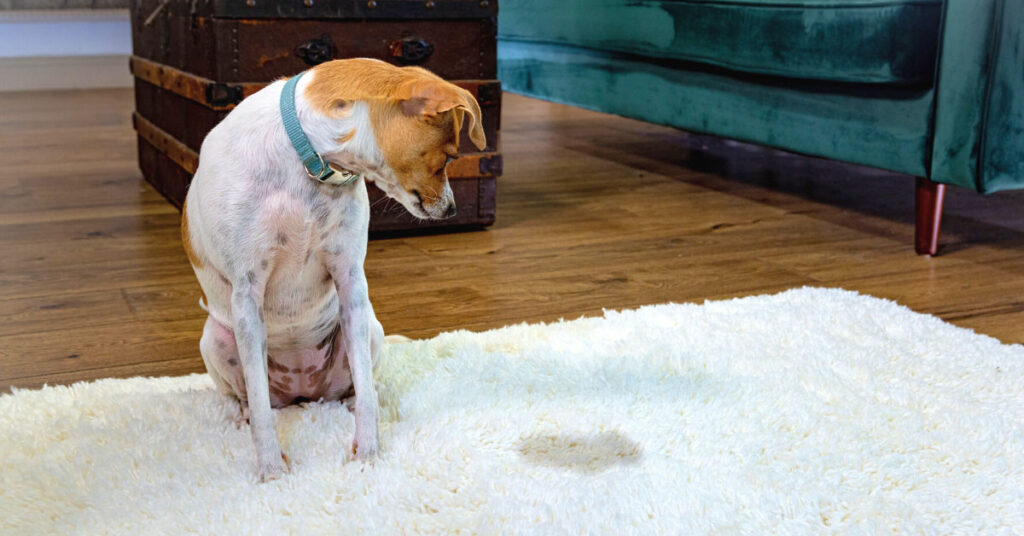
It’s considered natural behavior when dogs mark a certain spot, but it’s certainly not acceptable in the house. Furniture, floors, walls, and other items are ruined or damaged when your dog decides to claim them as his own.
Urine marking is not the result of faulty housebreaking. In fact, most of the time, urine marking can be curbed with behavior modification.
Why Is Your Dog Marking in Your House?
One of the most common reasons dogs start urine marking inside your home is the addition of anything or anyone new, be it a new dog or cat, a baby, a new partner, or even new furniture. This behavior can be particularly prevalent in multi-dog households where there’s competition for resources, attention, or status. By territory marking, a dog is basically saying, “This is my space. Keep out.”
Other triggers may be stress, like moving to a new home or even a change in your and your pup’s routine. Certain forms of anxiety, like separation anxiety, can also cause this behavior. Dogs urine mark as a coping mechanism, providing them with a sense of security and familiarity in response to perceived threats or changes.
If your dog urinates more frequently in your home, this may also indicate underlying health issues. Certain diseases may result in increased urination, which can be misconstrued as marking behavior.
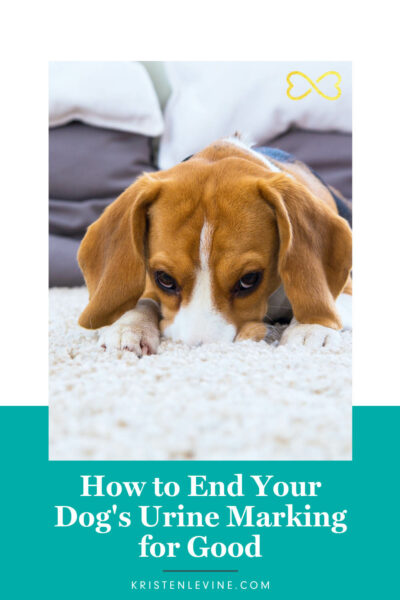
How to Stop Dog Marking in the House
Spay or Neuter Your Dog
For both female dogs and male dogs, spaying or neutering will reduce or stop marking behavior. According to the North American Veterinary Community, as many as 50% of male dogs stop scent marking, or at least do it significantly less often, after being neutered.
Intact male dogs usually begin marking when they start to reach sexual maturity.
If you have a puppy, neutering him as soon as he’s old enough is one of the best ways to stop indoor marking from starting in the first place.
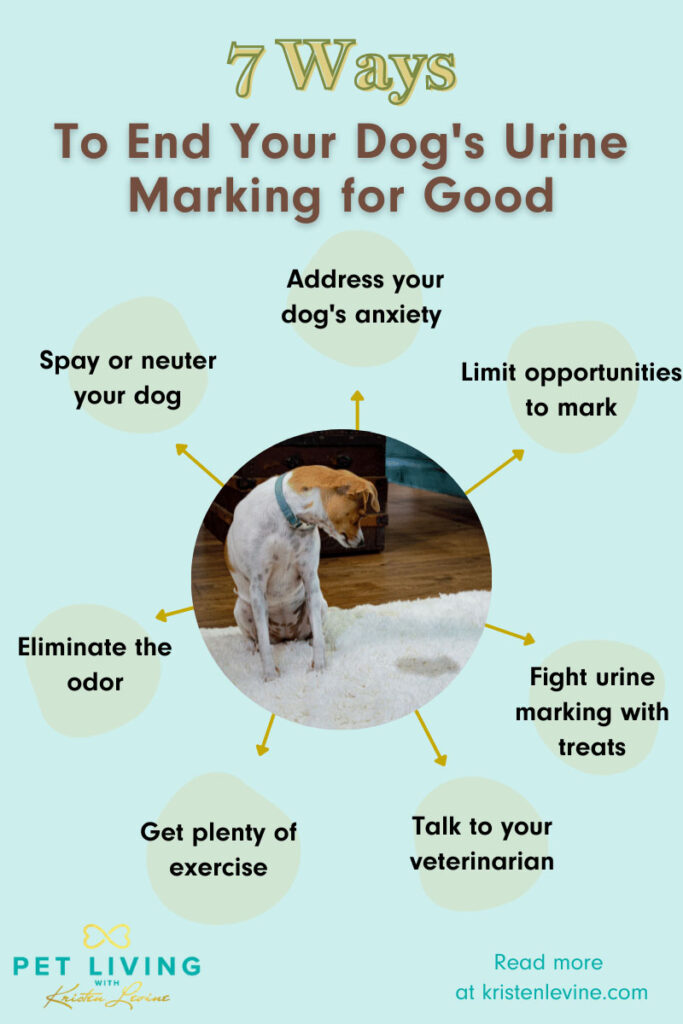
However, it may be days or even weeks for the urine marking behavior to stop after your dog is altered since hormones gradually decline rather than come to a screeching halt.
And it will likely also take some additional house training on your part to change the marking behavior if it has become a deeply ingrained habit.
If your male dog is peeing in the house weeks or months after he’s altered and after you’ve taken the steps below, there could be other behavioral or physical issues that need to be addressed.
Address Your Dog’s Anxiety
If your dog’s marking is caused by something like separation anxiety, you’ll want to address it sooner than later, especially since anxiety can escalate as your dog ages.
This is one reason why it’s important not to yell at your dog when he marks. If he’s doing it out of anxiety, yelling may make it much worse.
Some dogs experience noise anxiety, social anxiety, or separation anxiety. These fears can make a dog react with unwanted behaviors, like urine marking.
There are several OTC (over-the-counter) anxiety tools that can help alleviate your pup’s anxiety. I love this pheromone collar from Adaptil.
My dog, Chilly, had severe anxieties, especially around loud noises, and this collar was a very effective tool we used to manage it. The pheromones have a calming effect on some dogs and can reduce the urge to mark. There is also a room diffuser if you prefer that.
There are also many food-based remedies for calming anxiety, including calming probiotics and calming foods.
Ultimately, if your dog has anxiety, you may need to enlist the help of a veterinary behaviorist to work through it. You can find a behaviorist in your area using this page on the dacvb.org site.
You can also check out my pet anxiety resource page for more information about anxiety signs and solutions.
Eliminate the Odor
As long as the odor from your dog’s urine is still there, he’ll likely continue to mark the same spot. So it’s important to clean it up correctly, with a bio-enzymatic cleaner designed to eliminate biological waste, like urine. Be sure to let these completely dry to eliminate all traces of organic matter.
An enzyme cleaner works by eating the bacteria that’s causing odor and stains. Ordinary household cleaners will do little to eliminate the mess. If you’re in doubt, take a black light to any mess you’ve cleaned without using a bio-enzymatic cleaner, and you’ll be convinced!
Kinderbean No-Stress Mess Eraser is, paws-down, the best cleaner for pet mess, in my opinion. I’ve tested a lot of cleaners, and most have come up short in one way or another.
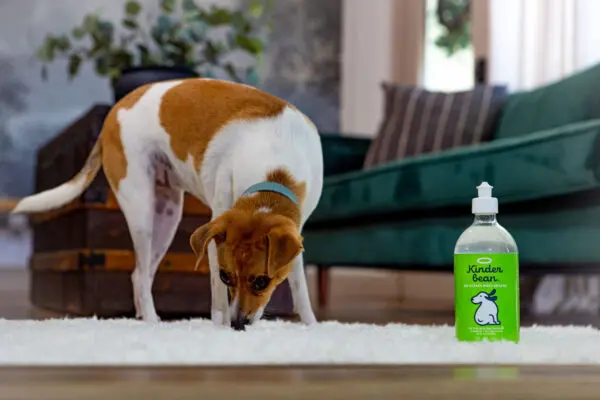
Whichever cleaner you choose, make sure it is:
- Bio-enzymatic
- Safe for pets (both in chemical composition and odor)
- Doesn’t contain harsh dyes that could discolor surfaces
- Contains natural ingredients
- Has a durable dispenser (many have cheap spray tops that break in shipping)
Once you have your cleaner, you need to use it properly to make sure it eliminates the odor.
- Soak up as much urine as possible with a paper towel.
- Saturate the spot with the cleaner. This is important so it can make contact with the urine and eat the bacteria.
- If the spot is horizontal, lay a clean cloth over the top and allow it to set overnight or 12–24 hours. If the spot is vertical, allow the cleaner to air dry.
- Retreat if necessary.
It’s a very simple process, but it’s so important not to simply “spray and wipe away.”
- Enzyme-Powered Cleaner: Simple ingredients, powered by plants. Powerful, bio-enzymatic formula biodegrades odor and stain molecules leaving nothing behind.
- Any Stain, Any Surface: Erases pee, poop, vomit, blood and scoot stains from all floor and furniture surfaces including carpets, upholstery, hard floors and more - even cleans leashes, collars and pet bedding.
- Easy to Use: In just three steps, this ready-to-use cleaning formula will erase messy stains and odors for good - no mixing, just shake and go.
- Safe for Pets & the Earth: Our non-toxic blend of safe probiotics and naturally occurring enzymes have no harsh chemicals, no scary additives, no residue and no possibility of harm to your family or pets.
- Created by a Pet Expert: Pet industry veteran and lifelong pet parent Kristen Levine created Kinderbean to make loving pets easier, messes and all.
Fight Urine Marking with Treats
Most dogs won’t pee where they eat. Change the meaning of the place he has marked by leaving treats directly on the spot after cleaning it.
Consistency is key here because as soon as you’ve banished one area as a pee spot, your dog may choose a new area. It may take weeks before your dog realizes the entire house is off-limits to territory marking. But this solution is usually permanent, so it’s worth the wait.
I like to use these treats because they’re low in calories and all-natural. When you’re dog training, you’ll go through a lot of treats, so you don’t want to give them full-size bones or cookies that will pack on unhealthy pounds.
Get Plenty of Exercise, Both in Body and Mind
Breeds known for their high energy or above-normal intelligence are in special need of exercise. Getting out that pent-up physical or mental energy can help calm your dog and avoid behavioral issues, such as marking.
If you’re already walking your dog and he’s still peeing indoors, you may need to step up your game and either walk him longer or take him for a run.
If running doesn’t get you paws-itively excited, try taking your dog to the park for a game of high-intensity fetch. One of my favorite fetch toys is the ChuckIt! Ring Chaser. It allows you to throw a ring-like toy long distances without tiring out your arm. Plus, it bounces and rolls in ways that are really enticing to our energetic pooches!
Brain stimulation is also important, so come up with creative games or tricks to teach your pet. Not only will it give your pup a purpose, it comes with the benefit of increased bonding time with you!
Exercise may seem like a very simple step, but it’s probably one of the most important!
Limit Opportunities to Mark
If your dog is a stubborn marker, you may need to take stricter measures to curb the behavior.
Some experts recommend the umbilical cord method. When your dog is inside, he’ll remain leashed to you so you can closely monitor him. As his behavior improves, you can gradually give him more freedom to explore the house.
I’ve tried this method to housebreak my dog, Tulip, and it works fantastically. I’ll caution, though, that you do need a lot of patience and consistency to see results.
When to See Your Veterinarian
In most cases, behavior modification is enough to curb your dog’s urine marking. However, in some cases, urine marking can be caused by medical issues.
Your dog may have begun marking because of a urinary tract infection, and the only way to know for sure is to visit your veterinarian.
If your dog has begun marking and there doesn’t seem to be any apparent trigger, it’s time to visit your veterinarian to rule out anything that needs treatment.
Additionally, if your dog has extreme anxiety that’s causing the urine marking, you may need to seek help from a veterinary behaviorist. They can help get your dog the relief he needs and recommend more ways and methods on how to stop a dog from marking in the house.
When Is Urine Marking Acceptable?
When you’re walking your pup, urine marking outdoors should be all right. If you’re in an area where marking would not be acceptable, perhaps like your neighbor’s beloved garden or flower bed, take note of any tell-tale signs that your dog is about to mark, like prolonged sniffing. Lead your pup away from the area by encouraging them to move along (use the voice that you know gets lots of wags) and offer treats if you have any on you.
The Tail End
If your dog is urine marking in the house, rest assured it’s not because he wasn’t house trained enough. Urine marking is a behavior, and with behavioral modification along with neutering your dog, you can stop marking for good.





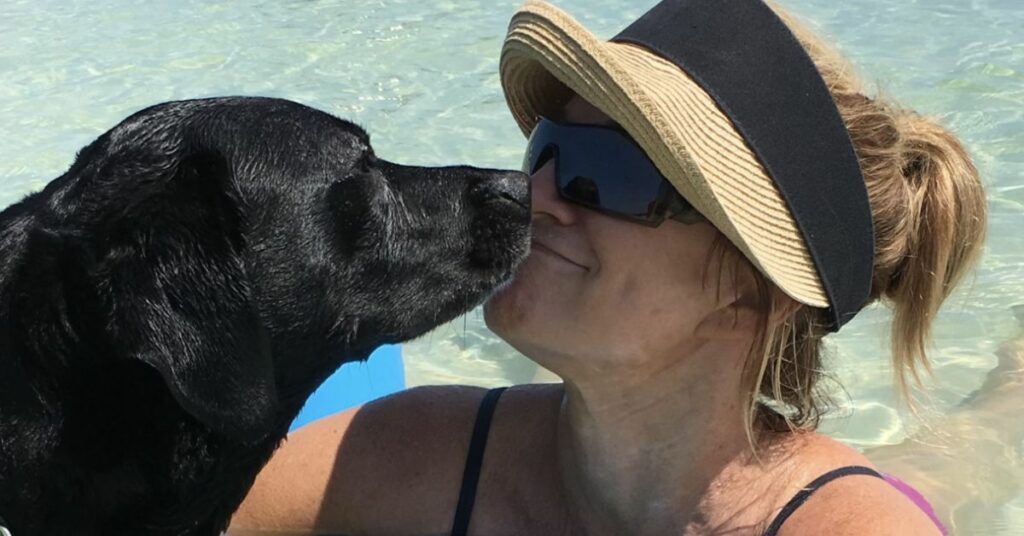
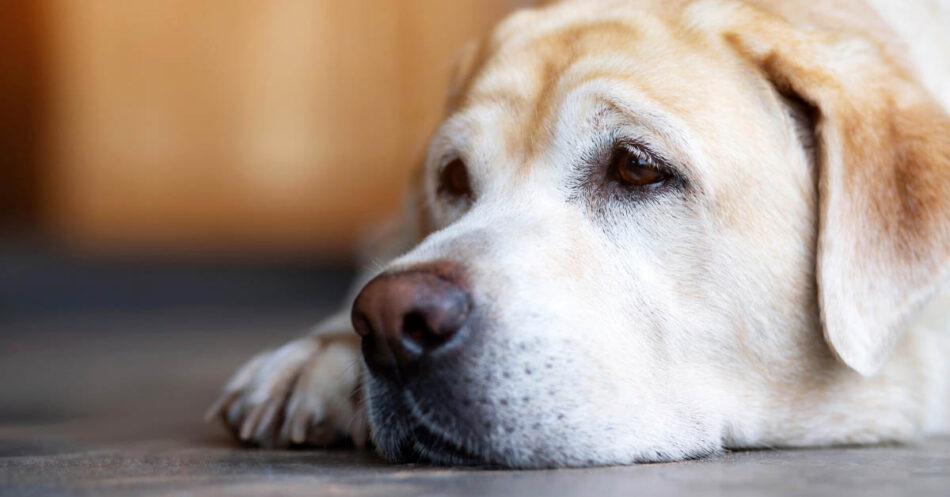
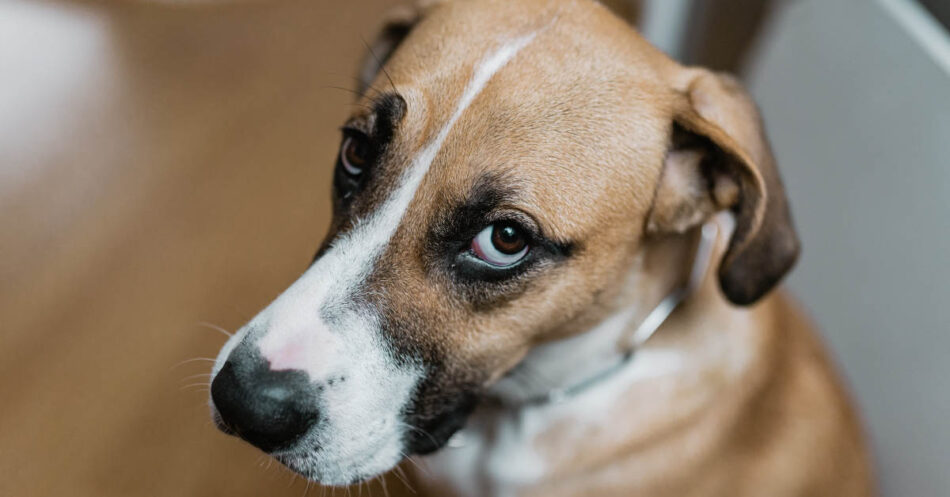
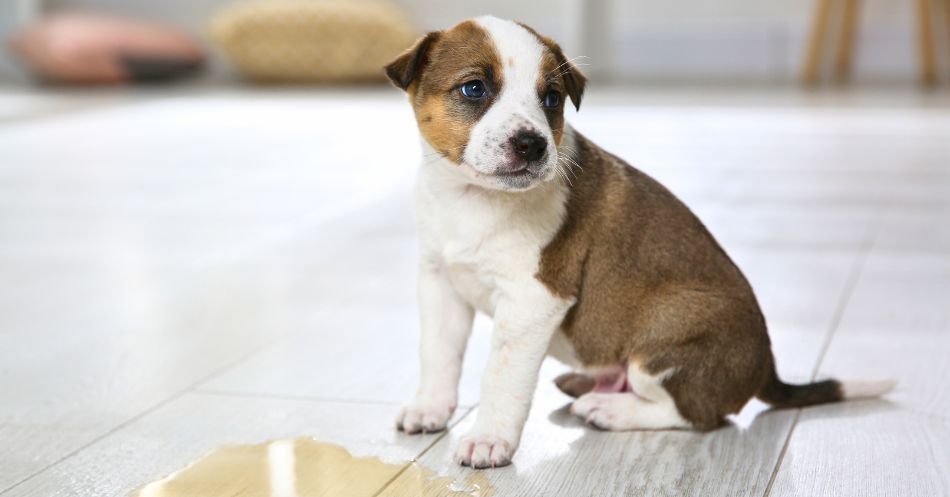
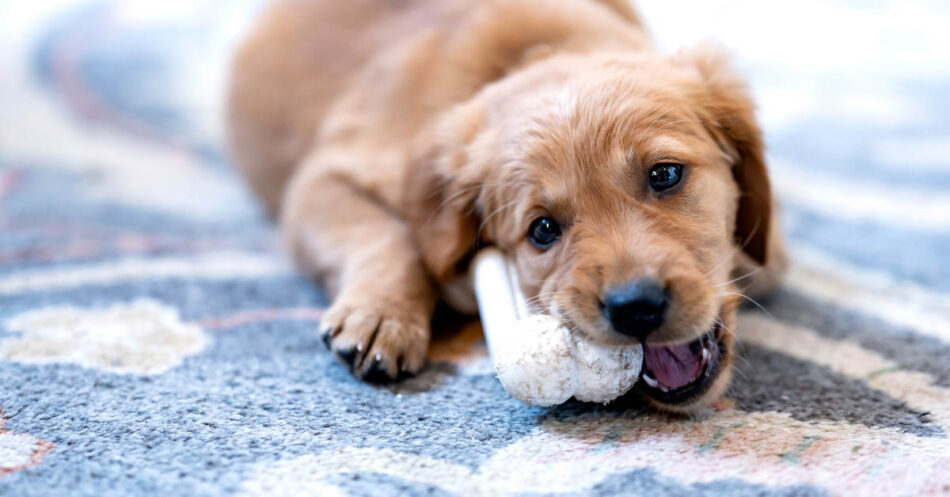
I have two male Golden Doodles. One is 17 months and the other is 8 months. The 8 month old pees on the 17 month old while he is pooping. I caught him trying to pee on his face tonight! They play and rough house a lot. I know this is evidence of dominance. The 8 month old is not neutered because he is being used as a stud when he is older. The 17 month is neutered. What can I do to stop this?
Hi Leigh,
Gosh, I’m sorry to hear that the little guy is “marking” your other little guy. Frustrating for sure. Normally, I’d say neutering would be a great measure to take to reduce or eliminate the behavior. But if you can’t neuter him, you can focus on modifying the behavior by noting if there’s a pattern of “when” the 8 month old is most likely to mark the 17 month old. Once you see a pattern, you can separate them to avoid those instances. But if there’s no rhyme or reason to the behavior I suggest the following. Take him for a vet visit to rule out any potential medical issues that could lead to this behavior. Talk to your vet about calming supplements that might reduce the behavior. He or she may also suggest you talk to a veterinary behaviorist — a vet that specializes in treating or modifying unwanted animal behaviors.
Let me know if this is helpful.
Kristen
Hi Kristen,
I have a nearly 2 year old, rescue beagle, Otis. The marking is driving me insane! He’s walked frequently, despite the NC heat/humidity, no check that, I carry him across the pavement to avoid burning his paws, but will still pass by a corner or dining chair, and lift his leg with a quick, pew pew. I clean it, but it’s like that beagle nose, knows where it is. Are there any sprays that can be used as a deterrent? Thanks!
Hi Terri,
I’m sorry Otis is marking in the house! I assume he’s neutered? If not, get him neutered because that will help and may eliminate the behavior.
If that’s already been done, is it possible he’s anxious about something? Some dogs urine mark due to anxiety — changes at home, new visitors, new pets, etc.
A good enzymatic cleaner when used properly (follow directions to a tee) will eliminate the odor. But that won’t guarantee Otis won’t do it again. I like this one by Unique Pet Care.
You might also try a pheromone collar to calm him naturally, in the event his marking is anxiety linked.
You should also talk to your vet as he or she can examine Otis and do some diagnostics to rule out any medical issues that could cause this behavior.
Keep me posted!
Kristen
Hi Kristen,
I am 23 weeks pregnant and our second rescue dog is marking the end of our bed on my side. He’s about 2.5 years old and is neutered. We have had him for a year and this only started about a week ago and he’s done it twice now. I am wondering if it’s not a coincidence since I’m pregnant and he can sense it. I would not classify him as an anxious dog. He is allowed in our room and has marked when we are not in the room. It’s so stinky though and I really don’t want him doing this when baby arrives. Do you have any advice? Thank you!
Hi Annie,
Congrats on your baby on the way! And sorry to hear your pup is suddenly marking the bed. Not good.
You mentioned that it only started a week ago (at the time of your writing), so I’d suggest you take him to the vet to see if there’s a medical issue causing the behavior like a UTI, etc.
He may be able to sense the baby on the way — who knows. Even though you say he’s not an anxious dog, he probably senses that things are changing around him as you prepare for the new baby. Dogs are so intuitive that way! If that’s the case, I believe that a calming product could possible help him and reduce or eliminate the behavior. It can’t help to try!
I like the pheromone collars and diffusers because they are a natural way to calm dogs. If he’s only marking in the bedroom, try the room diffuser. Here’s the one I use.
I hope this helps!
Kristen
Hello,
I have an 18 mos unaltered male golden retriever who has recently been marking a lot at the dog park on objects and bushes and occasionally on people. He doesn’t do this in the house ever and occasionally he will on walks. I try to distract him with praise during the walk to deter this behavior but not sure how to deter him at the dog park. Would an Ecollars be an appropriate way of training him to stop this behavior at the park? No medical issues and no plans to neuter him at this time.
Thank you,
Tasha.
Hi Tasha,
I’m glad to hear your dog is not doing the marking behavior in the house. You are lucky!
As you probably know, what he’s doing outside at the park, on objects, etc, is perfectly natural/normal for an unneutered male. I fear that any attempt to change his behavior (marking outside) could possibly lead to him doing it indoors — which would be so much worse!
An E-collar traditionally is like a “lampshade” that goes over your dog’s head to prevent him from lickign at a wound or a surgical site, etc. When you say E-collar, if you mean an electronic collar for behavior training, I would caution you against that because as I said above, I worry that if he’s punished for marking outdoors, he may start doing it indoors.
If it’s really bothersome to you, you can direct him to areas where you prefer he marks (choose a few locations where it’s okay to mark) and praise and treat him when he does. Then, discourage him from marking in other places by keeping him on a leash and diverting him to an “okay place” when he tries to mark a “not okay place”.
I hope this is helpful!
Kristen
Hi,
I recently got a 14 month old, male, German shepherd mix from a rescue, the rescue said he was neutered. The foster said he was house trained but he’s had a few accidents which I assume were normal due to the new environment. Recently we moved to a house with a finished basement, the previous family had dogs that would poop and pee down there every once and a while, and now he is constantly marking down there, even right in front of me. We have played with him down there but he spends most of his time upstairs (we don’t trust him down there anymore), or in his crate when no one is home and he’s never marked or had an accident upstairs. He is a very anxious dog and we’re just starting an anxiety medication for him. How do we get him to stop peeing down there even when we’re watching him and he just went outside??
Hi Makayla,
Congrats on adopting a dog! You are a rescue angel!
You may find that the anxiety meds he just started on may reduce the marking behavior in the basement. However, it may not. It’s tough to expect a dog not to mark where he smells other dogs who have relieved themselves.
Your best bet may be to do a very extensive cleaning of the previously soiled areas in the basement to remove the odors. Enzyme cleaners do this best.
Also, keeping him out of the basement is likely your best bet. Or, limit his time down there after you’ve cleaned it and reward him for not marking.
You can also talk to a veterinary behaviorist who specializes in working with unwanted behaviors. You can find one near you at DACVB.
I hope this is helpful!
Kristen
Hi! I have a 10 year old male shitzu who is not neutered. We had company this past Thanksgiving which a female dog was in the house and ever since then my dog has been peeing in the same spots!! One place is my linen dining room chairs. I can never catch him doing it so it’s hard to discipline him. Do you have any suggestions of what I can do to keep this from happening over and over. There are days that go by where he doesn’t do it at all. He is let out frequently .. I’m at my wits end with this!!! PLEASE help😩
Hi Shawna!
I’m so sorry to hear of your problem! It’s a common one, I’m afraid.
From what you wrote, it sounds like that female dog visitor peed in various places in your home. Is that right? Or perhaps your dog just smells where she was hanging out?
I would suggest you do a comprehensive cleaning of all the areas she “visited” and all the places your dog is marking using an enzyme cleaner to completely remove the odor. If you follow directions carefully on the bottle, that should remove the odor and theoretically, your dog will stop marking those spots.
This is my favorite enzyme cleaner.
You say your dog is not neutered. I can tell you that neutering him would be the best way to reduce or eliminate the behavior if cleaning doesn’t do the trick. There are various health benefits to neutering a dog too. But if you prefer not to, and the above doesn’t help, I’d seek out a veterinary behaviorist as they specialize in treating or modifying unwanted behaviors like this. You can find one near you at DACVB.
I hope this helps!
Kristen
My live in boyfriend has a Pomerian not neutered. I have two dogs and a cat. My animals are in and out. His only goes out to go to the bathroom. My problem is he marks everything and everywhere. Im talking shoes, clothes, garbage can, anything and everything. Help!!!
Vicky,
Oh no! That sounds like a nightmare! I don’t suppose your boyfriend would neuter his Pomeranian? That would be my advice as the best way to reduce or possibly eliminate the behavior.
Otherwise, it sounds like he needs to have very limited access to the areas where he’s causing the most problems. You can also try redirecting the behavior outside. Encourage him to mark things outside and praise him for it.
He’s clearly trying to “make a name for himself”, LOL amongst all your other pets. He’s the new kid on the block and he’s just doing what unneutered male dogs do, unfortunately.
You could also take him to the vet to see if there’s some medical issue causing the problem. He also could be marking due to feeling anxious in this environment. If that’s the case, you can try putting a pheromone collar on him to naturally calm him.
This will be a trial and error kind of fix. You have to try a few different things to see what gets results.
Keep me posted Vicky!
Kristen
Hi! I have a 9 year old lab/springer mix and he only seems to mark at my boyfriends house when we leave. He has been here on and off for 2 years so it’s not new surroundings to him anymore! My boyfriend does have two boys (4&5) who have peed in places – whether it be accidents or just boys being boys…. but he will lift his leg on the couch! Not every time we leave but too often to ignore. I also have 2 other male dogs but they are always together and I don’t have this problem in the other house hold they spend their time in. It’s about 50/50. Any suggestions on how to fix it would be great!
Hi Katie,
That’s a frustrating problem for sure!
If it’s possible to deep clean the areas where your dog marks (assuming it’s a few key places), I’d say to use a good enzymatic cleaner and follow instructions to a tee. That will eliminate the odors.
Or, try keeping him on a leash so he can’t get to the couch or his other favorite places to mark. You can try to redirect the behavior too. Before you leave, put him on a leash and direct him to a location outside where it’s okay to mark.
And lastly, if he’s not already neutered, get him fixed. This will definitely help the behavior, but no guarantees to completely eliminate it.
Let me know if this is helpful!
Kristen
I have an 20 month old healthy neutered rottweiler. He has been potty trained, but started peeing in the house this week. He has a dog door, my 5 year old female dog that is the dominant one to play with and nothing has changed in the house. I am have been working from home since March. What is going on???
Hi Kristen,
That is a frustrating issue. It sounds like there could be an underlying medical cause since this behavior is sudden and he is already trained. Dogs can also begin marking when there is a sudden change in the home. Although it is September, when you began working from home that was a big adjustment for him!
I would start by talking to your vet. Your vet can determine if there is a health issue causing the marking. The next thing to do is clean the area he pees in really well with an enzyme cleaner. This will help get rid of the odor so he is less likely to pee there again. If you catch him peeing inside, you can redirect the behavior by putting him outside.
I hope this helps! Let me know.
Kristen
I have an 11 month old male American akita and we have just got a Female Akita puppy as he was wrecking the house any time we went out whether it was to work or just a 5 minute walk to the shop we would get back and he would have destroyed something, getting the female has calmed this down as he is not alone when we leave anymore but he has stopped weeing outside, he used to be so good at going to the toilet and he would not see or poo in the house unless we were at work and not in to let him out (which is understandable) we have had the female for 4 weeks and he stopped weeing outside about 2 weeks ago, the female uses outside as a toilet or her puppy pad at night so she isn’t weeing or pooing directly in the house, we took our male to the vets for a heath check last week and they said that he is healthy and that nothing is wrong with him and just told us to do the puppy training process again, he goes for two walks a day, an hour after his breakfast in the morning and the same in the evening, he drinks plenty of water throughout the day too. He will only have little weeks when we are walking him just to mark where another dog has peed but it is not enough to empty his bladder, he will then wait for us to go to bed and he will wee the minute he sees us in bed, he goes downstairs and does a huge wee in the kitchen, we have tried everything we can think of, including putting him on the lead in the back garden and trying to massage his bladder but he is being so stubborn, would you know what to do with this to help him out as it can’t be comfortable for him and we can’t keep letting he pee in the house? TIA
Hi Dannielle,
Oh no! That sounds like such a frustrating issue. Are they neutered/spayed? Your male may be trying to show his dominance towards the female by marking in the house. Getting him neutered is my number one recommendation as neutered males are less likely to mark and it could solve your problem. Another thing I recommend is to clean each area he marks very well with an enzyme cleaner because if he can still smell his urine, he is more likely to keep going inside. I love this one as it gets the odors out really well!
I hope this helps! Keep me posted.
Kristen